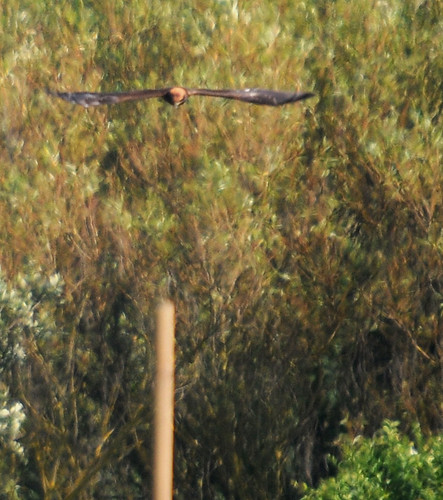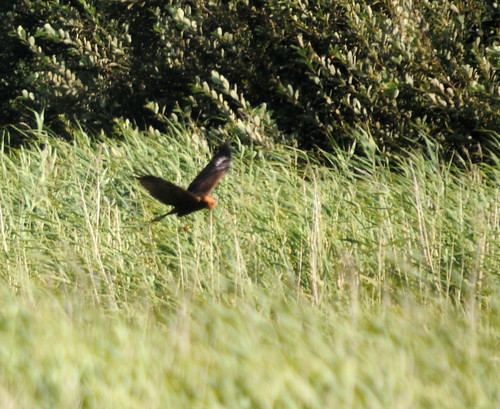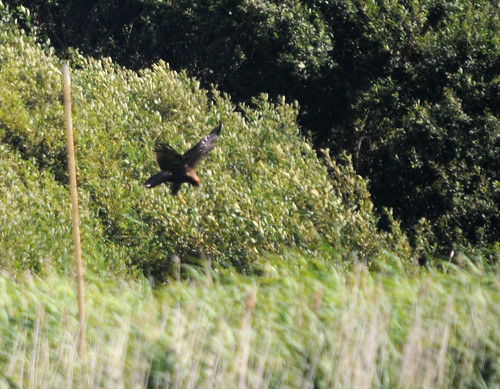Whilst back in the UK, I visited for the first time a small wetland reserve. As I walked down the path to what I assumed would be an empty hide a little old lady walked out and as we passed I greeted her with the typical birders' exchange:
"Is there anything much about?"
To my surprise she replied that there was "a pair of lovely marsh harriers - the nice people inside will show you". Things were looking up. Shortly thereafter her husband came wandering up the path after her, greeting me and telling me to keep an eye out for the harriers. I entered and "the nice people inside" (who were indeed nice), told me the harriers had dropped into the reeds. Soon enough I called out harrier as a big black moth like form rose out of the reeds and floated across the reserve.
This pattern was repeated several times at extreme distance as I strained for half decent photos (and failed). As it did I learned that the harriers had bred on the reserve for the first time that year (as this is a kind of open secret intended to protect them from persecution I won't be sharing the location) and brought off a couple of young successfully. Hopefully they will return next year with their parents and the beginnings of a new local population will be in place.
"Is there anything much about?"
To my surprise she replied that there was "a pair of lovely marsh harriers - the nice people inside will show you". Things were looking up. Shortly thereafter her husband came wandering up the path after her, greeting me and telling me to keep an eye out for the harriers. I entered and "the nice people inside" (who were indeed nice), told me the harriers had dropped into the reeds. Soon enough I called out harrier as a big black moth like form rose out of the reeds and floated across the reserve.
This pattern was repeated several times at extreme distance as I strained for half decent photos (and failed). As it did I learned that the harriers had bred on the reserve for the first time that year (as this is a kind of open secret intended to protect them from persecution I won't be sharing the location) and brought off a couple of young successfully. Hopefully they will return next year with their parents and the beginnings of a new local population will be in place.
Marsh harrier was always my favourite raptor as a child though I'd never seen one. The colours of the two sexes were rather fantastically rendered in one of my first bird books and I couldn't believe a british bird could look so exotic. Immediately prior to my childhood it was barely a british bird, the population was in single digits due to persecution by gamekeepers and falling.

Now though, with persecution across much (but sadly not all) of Britain at an end, and with a fleet of well managed wetland reserves across the country catering to their needs, anyone can see a marsh harrier if they make the effort to look. The area around my childhood home is, for the informed, a great place to spot them drifting across wetlands and cornfields which act as unnatural surrogate reedbeds. Meanwhile, new breeding sites like this one pop up every year. May the recovery continue indefinitely.


1 comment:
Marvelous! I'm so happy they're recovering in what once was their native habitat. It's nice to see we figure it out once in a while and try to put things right...
Post a Comment